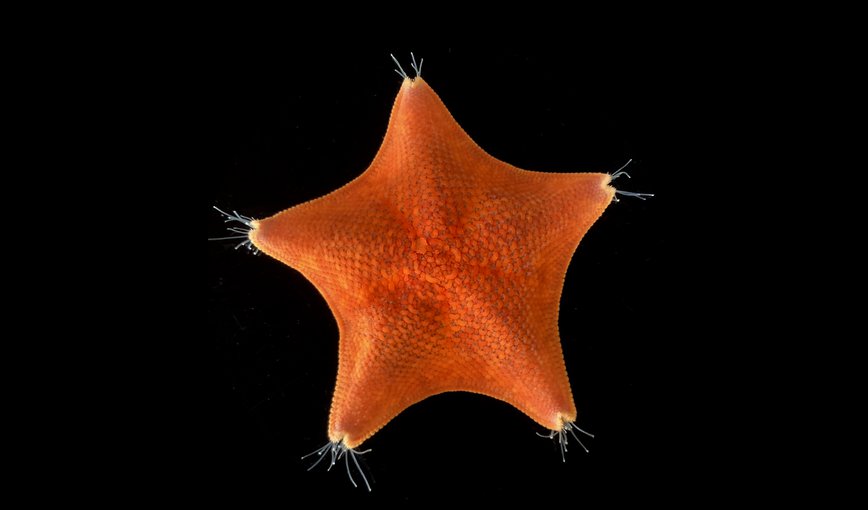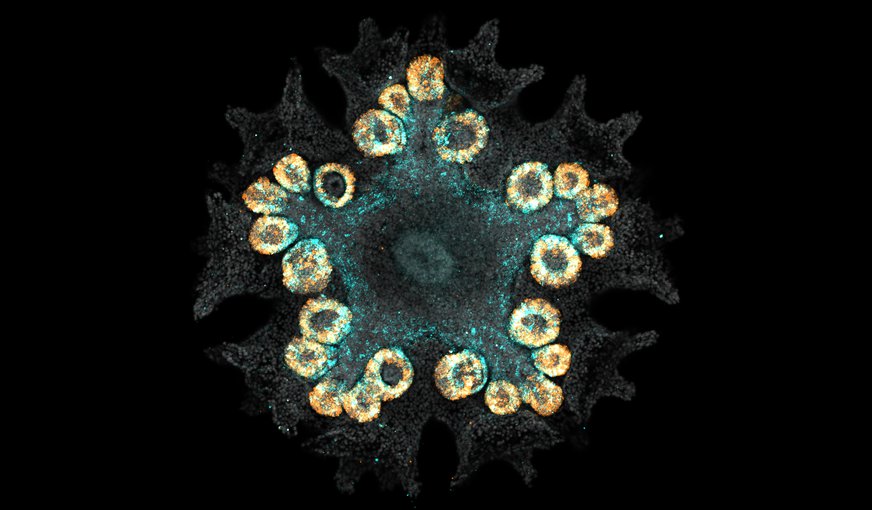
Scientists supported in part by NASA have provided new insight into the evolution of echinoderms, members of the phylum Echinodermata. The findings could help answer a long standing question about the evolution of multicellular life on Earth.
Echinodermata includes members such as starfish, sea urchins, and sand dollars, which have many traits that make them unique amongst the animal kingdom. The most noticeable trait of Echinoderms is their radial body plan. Most animals are bilateral, or have bodies that can be divided into two sides. If you were to draw a line down the center of a human from head to foot, you have a left and right side that roughly mirror one another. Echinoderms bodies, however, are more circular, and can be divided into five mirror parts.

Patiria miniata.Image credit: Laurent Formery.
However, based on what we know about the evolution of life, Echinoderms and other animals all evolved from a bilateral ancestor. The question of how and why Echinoderms diverged from the rest of the bilaterian animals to develop radial symmetry has been a puzzling question for biologists. Whether echinoderms have an equivalent of a head to tail axis that characterizes their ancestors is a long standing zoological puzzle.
The new study revisits this classic question using genetic markers that are conserved across members of the animal kingdom and that are used to identify the posterior (rear end) and anterior (head) end of the body.
“Once animals made the transition to multicellularity, cells needed to be organized to allow them to specialize and integrate effectively into a functional animal,” explains co-author Christopher Lowe (Stanford University). “During development, cells are organized along axes – the anteroposterior axis being one of the most important. The molecular determinants of the anteroposterior axis are very conservative across bilaterian animals – the genes involved in informing a fly head are the same genes involved in defining a vertebrate head.”

This image shows the expression of genes in Patiria miniata.Image credit: Formery et al. 2023.
The team tried to determine why Echinoderms end up with their unique radial body plan even though they contain the genes that lead other animals to develop a distinct anterior/posterior axis and bilateral body plan. By studying the sea star Patiria miniata, they found that the expression of these genetic markers shows a pattern similar to bilateral organisms within each of the five rays, or arms, of the star. The midline, or center of the arm, coincides with the anterior (head) of other animals. As you move out from the midline, the body of the sea star exhibits more of a posterior identity in terms of its genetic patterning. Interestingly, there is no part of the sea star’s body that has the genetic characteristics of the ‘trunk’ of other animals, or everything located between the head and the posterior.

An example of patterning in Patiria miniata.Image credit: Laurent Formery.
In simple terms, the study shows that Echinoderms are mostly composed of a ‘head-like’ body in terms of their genetics. The study suggests that it is time for scientists to re-evaluate the evolutionary events that led to Echinoderms diverging from the rest of the animal kingdom to end up with their unique radial body plans.
How cells are organized in multicellular animals can also provide insights for astrobiology.
“Most of comparative biology has focussed on animals with similar organizational properties – a well defined anterior and posterior. However, if we are to potentially recognize multicellular life on other planets, we need to understand how evolution can shape axes on earth and how axial determinants can be used to pattern very different body plans,” says Lowe. “Echinoderms are almost otherworldly in their weird body plan, and this project examined the flexibility of developmental biology to produce extremes in animal evolution.”

Gene expression data reveals the deployment of the A–P patterning system in Patiria miniata.Image credit: Formery et al. 2023.
The study, “Molecular evidence of anteroposterior patterning in adult echinoderms,” was published in the journal Nature.
